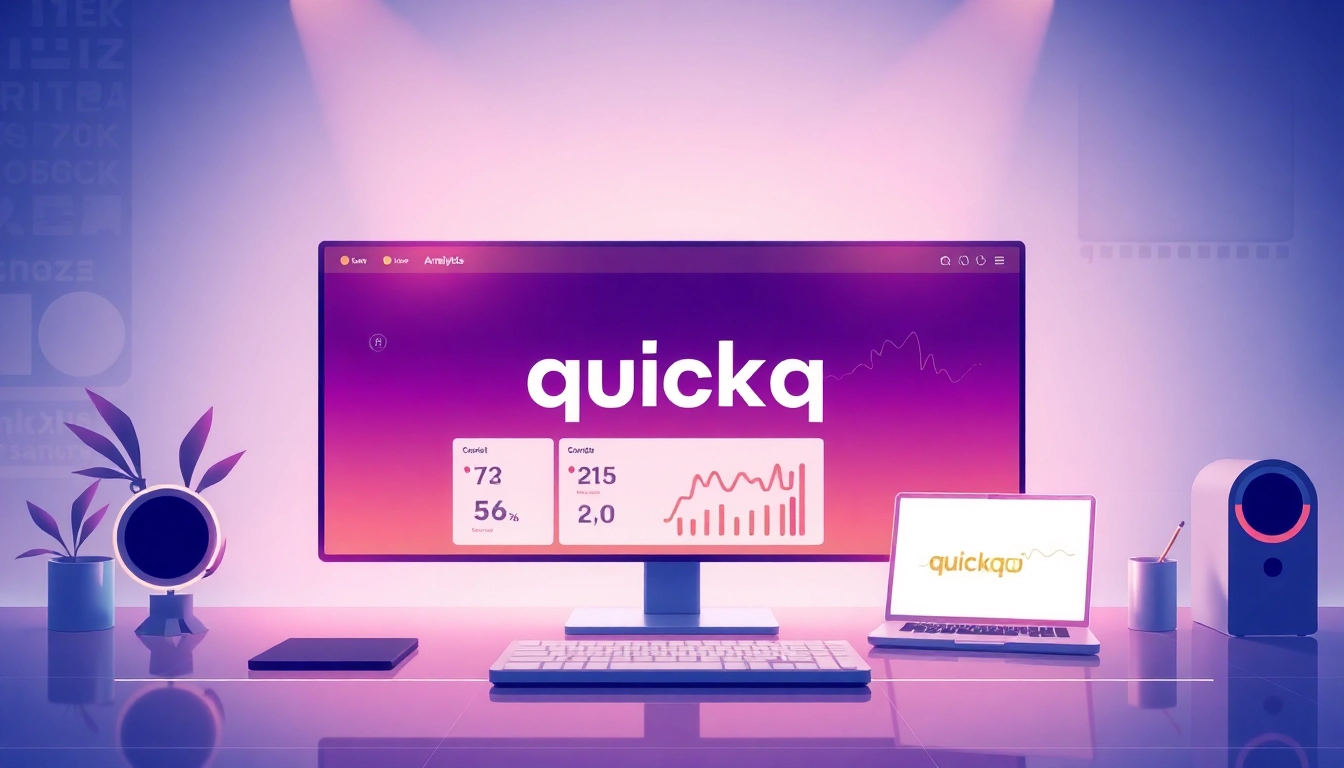Understanding KlingAI Prompts
Introduction to KlingAI Prompts and Their Importance
KlingAI prompts are revolutionizing the landscape of video creation by enabling users to generate high-quality video content from simple textual instructions. These prompts serve as the foundation for AI-driven video generation, allowing creators, marketers, and educators to craft engaging narratives without requiring extensive technical skills. The significance of KlingAI Prompts lies in their ability to streamline the creative process, enabling a broader audience to access and utilize sophisticated video production tools effectively.
How KlingAI Prompts Function in Video Creation
The functionality of KlingAI prompts revolves around their capacity to interpret textual input and translate it into visual outputs. At a basic level, a KlingAI prompt can specify elements such as scene descriptions, character actions, dialogue, and setting details. The AI’s advanced algorithms then parse these inputs to generate cohesive video segments that reflect the user’s intentions.
This technology leverages natural language processing and machine learning, allowing it to adapt and improve based on user feedback and interaction. As a result, users can refine their prompts over time to achieve more targeted outcomes, enhancing the overall quality and relevance of the videos produced.
Key Features That Enhance Prompt Effectiveness
Several core features distinguish KlingAI prompts and contribute to their effectiveness in video generation:
- Dynamic Adaptability: The ability to adjust based on user feedback and previous outputs, ensuring continuous improvement in the AI’s response to prompts.
- Comprehensive Scene Integration: Users can input detailed scene descriptions that encompass a range of visual elements, improving the richness of the generated video.
- Multi-Format Capability: KlingAI prompts support various video formats suited for different platforms, from short ads to long-form content, allowing flexibility for content creators.
- User-Friendly Interface: The simple structure of prompts minimizes the learning curve for new users, making the technology accessible to a wider audience.
Best Practices for Writing KlingAI Prompts
Structuring Your Prompts for Optimal Output
To maximize the effectiveness of KlingAI prompts, users should pay careful attention to how they structure their inputs. Well-defined prompts not only yield better results but also make it easier for the AI to interpret user intentions accurately.
Here are several tips for structuring prompts:
- Be Specific: Instead of vague descriptions, use precise language to articulate your vision. For example, instead of saying “a beautiful landscape,” specify “a sunset over a tranquil lake surrounded by mountains.”
- Use Actionable Verbs: Incorporate strong verbs to describe actions clearly. For instance, “a dog runs joyfully through a park” provides a clearer directive than “a dog in a park.”
- Include Contextual Information: Providing context helps the AI generate relevant visuals. Mentioning the mood or setting can drastically change the output. For example, “a dark alley illuminated by a single streetlight” indicates a specific atmosphere.
- Limit Complexity: While details are important, overloading prompts with extraneous information can confuse the AI. Aim for a balance between detail and clarity.
Examples of Effective KlingAI Prompts
Examples significantly illustrate the impact of well-crafted prompts. Below are a few examples that demonstrate various uses:
- Descriptive Prompt: “A bustling market filled with vendors selling colorful fruits and vegetables, with a cheerful crowd of shoppers.” This prompt provides clarity on both the visual elements and the mood of the scene.
- Action-based Prompt: “A girl leaps over a puddle while holding an umbrella, with the sun peeking through dark clouds.” This creates a visual dynamic showcasing motion and emotion.
- Scenario-based Prompt: “An astronaut floating in space, gazing at Earth from afar, with a reflective expression.” This scenario prompt allows for more creative interpretation of emotions and settings.
Avoiding Common Mistakes in Prompt Creation
Creating effective KlingAI prompts involves recognizing and avoiding several common pitfalls:
- Ambiguous Language: Phrases that lack specificity can lead to undesired outputs. Always aim for clarity.
- Neglecting Feedback: Failing to analyze the AI’s responses can prevent users from optimizing their prompts effectively. Regular adjustments based on outcomes can refine future prompts.
- Skipping Context: Providing insufficient context can result in outputs that may not align with user expectations. Always set the stage in the prompts.
- Ignoring Audience Needs: Tailoring prompts to the target audience’s interests ensures that the generated content resonates better.
Advanced Techniques for KlingAI Prompts
Incorporating Dynamic Elements in Your Prompts
To elevate the quality of video outputs, incorporating dynamic elements into prompts can significantly enhance engagement. Dynamic elements refer to actions, transitions, or other movements that add life to the narrative.
For example, instead of just stating what happens in a scene, consider actions that could vary the pacing or tone of the video. A prompt like “A raccoon rummaging through garbage, then suddenly looking at the camera” introduces a moment of interaction that can captivate viewers.
Using dynamic descriptors such as “swiftly,” “gracefully,” or “suddenly” provides the AI with clearer guidance on the desired motion or behavior in the scene, leading to a more engaging final product.
Utilizing Scene Descriptions and Motion Control
Scene descriptions are paramount in shaping the generated output of KlingAI prompts. By offering vivid details about the characters, environment, and action, users guide the AI in crafting realistic and engaging videos.
Incorporating motion control within prompts also plays a crucial role. Describing how the camera moves—whether it pans across a scene, zooms in on a subject, or follows a character—affects how the narrative unfolds visually.
For example, a prompt like “The camera slowly zooms in on the starry night sky as the foreground fades in, revealing a campfire with friends gathered around” combines scene description and motion control to create a visually striking effect.
Maximizing Output with Specific Prompt Formulations
Utilizing specific formulations further enhances outcomes from KlingAI prompts. This involves experimenting with different structures like:
- Sequential Storytelling: Break down your narrative into segments, allowing the AI to generate multiple clips that can be stitched together for a cohesive story.
- Interrogative Prompts: Formulate questions as prompts to elicit more detailed responses. For example, “What happens when a child discovers a hidden treasure?” prompts creative exploration of possibilities.
- Comparative prompts: Encourage the AI to generate contrasting visuals. “Show both a sunny beach day and a stormy beach afternoon” allows for comparative storytelling.
Exploring Visual Storytelling with KlingAI Prompts
Integrating Narrative Techniques into Your Prompts
Successful visual storytelling hinges on effective narrative techniques, and this applies to crafting KlingAI prompts. To engage viewers emotionally, consider elements like character development, conflict, resolution, and thematic depth.
For instance, a prompt that includes character motives—”A lonely boy finds an unlikely friend in a stray cat that appears during a storm”—offers an emotional hook that could resonate well with audiences. This allows the AI to produce content that not only tells a story but also elicits feelings.
Case Studies: Successful Videos Created with KlingAI Prompts
Numerous creators have successfully utilized KlingAI prompts to generate engaging video content. An analysis of successful cases reveals common strategies that contribute to high-quality outputs:
- User Testimonials: Several video bloggers have shared experiences in using KlingAI prompts to craft captivating stories for their channels, attributing the ability to generate unique content quickly as a significant advantage.
- Marketing Campaigns: Brands leveraging KlingAI prompts for promotional videos noted a marked improvement in customer engagement due to personalized and relatable storytelling.
- Educational Content: Educators embracing KlingAI prompts to create informative videos reported enhanced learner engagement, especially through the use of diverse narrative techniques.
Tips for Engaging Audiences through Visual Storytelling
Engaging storytelling involves a few critical tips for maximizing viewer engagement:
- Establish Clear Characters: Audiences connect more deeply when relatable characters are present. Ensure prompts include distinct character traits.
- Build Suspense and Resolution: Incorporate elements of tension within the prompts to keep viewers intrigued, ultimately leading to a satisfying conclusion.
- Leverage Visual Cues: Use visual metaphor and symbolism in prompts to create layered meanings in the story.
Future Trends in KlingAI Prompts
Emerging Technologies Influencing Prompt Development
The development and implementation of KlingAI prompts continue to evolve with advancements in technology. Several emerging trends are shaping the future landscape:
- Augmented Reality (AR) Integration: As AR technology advances, expect prompts to incorporate interactive storytelling elements that allow users to immerse themselves fully in the narrative.
- Voice-Activated Inputs: The rise of voice recognition technologies may allow users to generate prompts vocally, enhancing accessibility and ease of use.
- Real-Time Collaboration: New tools are being developed to enable multiple users to collaborate on prompt creation in real-time, fostering novel creative approaches.
Predictions for the Evolution of Video Prompts
The evolution of video prompts is set to accelerate as machine learning algorithms improve. Expect more personalized experiences that are tailored to users’ individual preferences and styles, with AI capable of learning from past outputs to create increasingly sophisticated content.
Additionally, the incorporation of diverse cultural contexts and languages will enable global market engagement, making KlingAI prompts a universal tool for creativity and expression.
How to Stay Ahead in Prompt Crafting
As the domain of AI-generated content expands, staying relevant in crafting KlingAI prompts is vital:
- Continuous Learning: Engage with online communities and resources to share and gain insights on improving prompt effectiveness.
- Experimentation: Regularly test new prompt structures and techniques to find unique ways to engage your audience.
- Feedback Analysis: Solicit feedback on generated videos to identify areas for improvement, ensuring an iterative cycle of enhancement in prompt creation.



